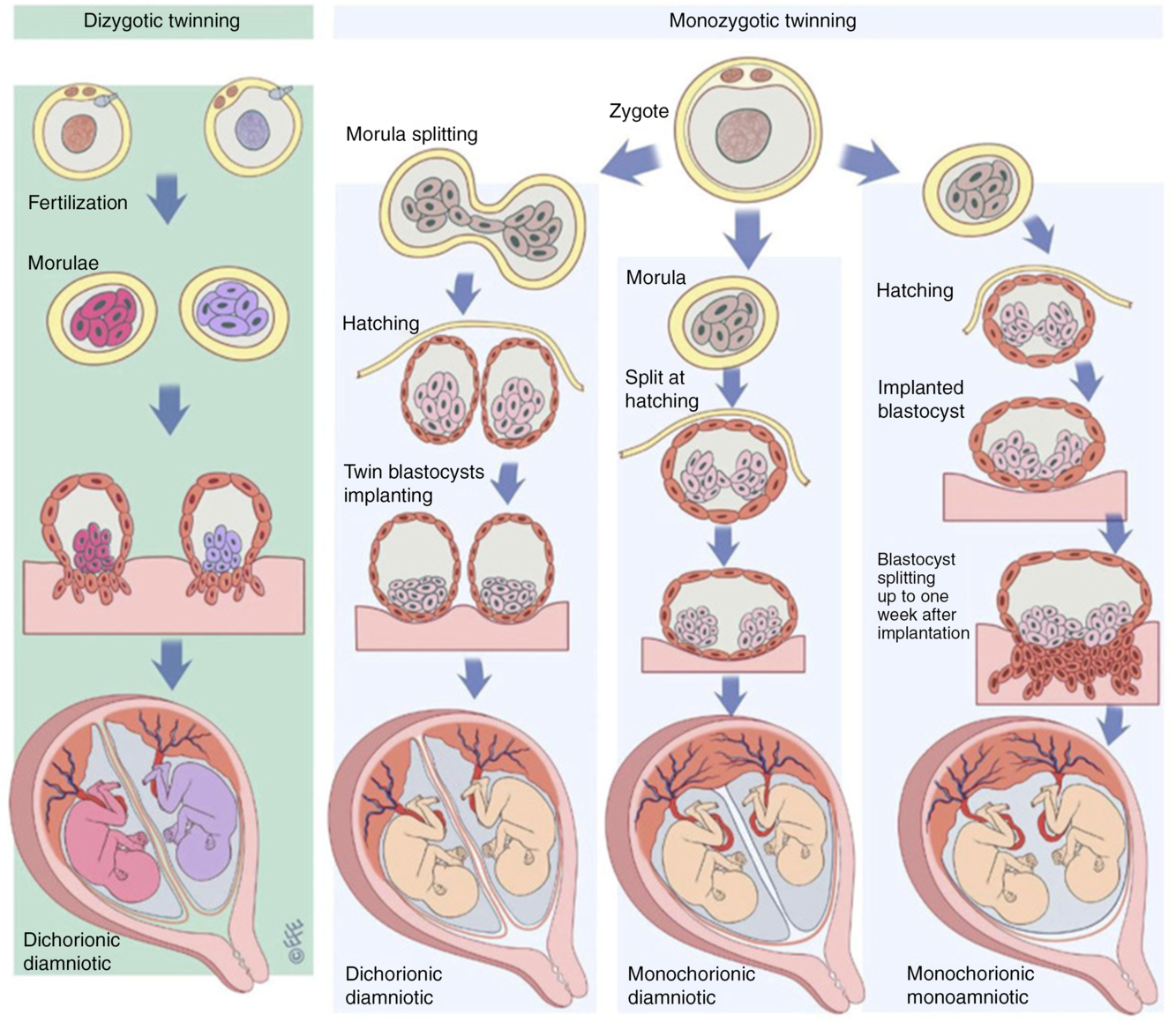The question of whether a pair of twins is identical or fraternal is one that many parents and twins have. If the twins are opposite sex, or very different in appearance (e.g. one is blonde and blue-eyed, one is brunette and brown-eyed), this question has a fairly obvious answer. However, fraternal twins can look very similar, and identical twins can look different. For twins falling into these categories, this can create a lot of confusion and uncertainty when asked if they’re identical or fraternal.
We’ve heard the following statements from twins who were later determined to be identical:
- The doctor told our mom that we are fraternal because there were two sacs or two placentas
- We look nothing alike
- We were different sizes at birth so we can’t be identical
- We’re so different we can’t be identical
Twin Pregnancies
The number of amniotic sacs or placentas present at birth has been a major source of confusion, especially in older twins whose mothers would not have had an ultrasound performed during pregnancy. However, even in younger mothers, dichorionic-diamniotic (di-di) pregnancies still cause uncertainty in twin type. 30% of di-di pregnancies are identical twins, but many doctors still believe that di-di pregnancies can only result in fraternal twins.
The following image shows the four different types of twin pregnancies.

Monochorionic-monoamniotic twin pregnancies are very high risk, as they share a placenta and an amniotic sac, which can result in cord entanglement and/or twin-to-twin transfusion syndrome (TTTS). TTTS can result in size differences at birth as blood flows unevenly between the twins. Positioning of twins within the womb can also cause size differences in identical twins.
Epigenetics
Identical twins who are discordant (one twin has it, the other does not) for a health condition have helped make contributions to the growing field of epigenetics. Living creatures have millions of chemical tags which can attach to DNA. These tags regulate cell activity, modifying the DNA without changing the actual DNA itself, which in turn affects gene activity.
These tags can be turned on or off by things such as diet, physical activity, stress, sleep, and environmental exposures. Errors in this epigenetic process have been found to contribute to cancer, metabolic disorders, and degenerative disorders. Epigenetic differences can also lead to differences in appearance, particularly in female twins.
To learn more about genomics, visit the NIH National Human Genome Institute website.
At-Home DNA Testing
The increasing popularity of at-home DNA tests is also leading to confusion and uncertainty. These tests may show that you and your twin are 99.9% identical but that ancestry results differ, leading you to believe that you are not identical.
This is incorrect!

A comparison study of DNA kits from different companies done by the CBC in Canada showed that genetically identical twins do not obtain the same ancestry breakdown.
According to Dr. Simon Gravel, a population geneticist, consumers should take the results generated by these tests with a grain of salt. People need to understand these tests are not subject to the same standard as diagnostic medical testing. They are more like a “recreational scientific activity,” he said.
So, if your 23andme results come back as identical, but your ancestry results are not the same, you’re still identical.